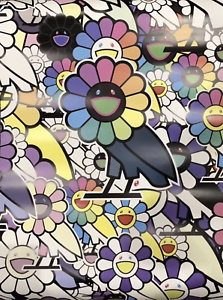The appeal of hype in “Generation Z”
January 18, 2019
The idea of “conspicuous consumption” plays into the growing subculture of hype. In a school setting, everyone knows what everyone is wearing, so there is a social benefit in wearing something known to be “scarce” or “limited edition.” The culture of “hypebeasts” on Instagram also promotes a desire to own products featured by celebrities or friends. But, while wearing hype may seem to obviously increase one’s social image, there are blurred lines in where hype becomes “stylish” or “gross.”
Junior Alessandra Costalonga uses exactly such word when the word Supreme first enters the conversation. “Supreme is kinda gross unless you have good style…” Costalonga said, trailing off. She has problems with the aesthetic of Supreme, but concedes to buying products because of their “hype.” “I think I’m high fashion, but I also like thrift stores and stuff like that. Vintage, sometimes, but I don’t want to look like I just walked out of a movie” Costalonga said.
People buy stuff just because its hype and not even wear it—they just have it.
— Yona Ketema
Junior Yona Ketema also has mixed feelings about Supreme, but embraces the idea of hype. “I am kind of a hypebeast, but I wouldn’t get anything unless I liked it, you know. People buy stuff just because its hype and not even wear it—they just have it,” Ketema said.
Costalonga takes on a more reverent tone for fashion hype brands. “Christian Dior,” Costalonga said, after a hushed ‘oh my god,’ “is so classy.” Christian Dior is one of the growing luxury brands—among Fendi, Gucci and Louis Vuitton—and is a counterpoint to the so-called “streetwear” style of Supreme-like brands.
Ketema’s eyes light up upon hearing Christian Dior. “Dude, if you get the Dior Plush toy…” Ketema begins.
“Lemme see…Wait, is that like the Moschino toy?” Costalonga interjects.
“There’s this artist named Kaws that sells these animals this X’s on their eyes, and they’re worth so much money” Ketema explains.
View this post on Instagram

The aforementioned toy is currently listed in StockX, a re-selling website, with an asking price of $12,769. Even to the self-declared hypebeast, this kind of hype has gone too far.
“That’s really hypebeast, if you buy that bear with X’s on its eyes just because its Christian Dior,” Costalonga said. Ketema agrees. “If you get this stuffed animal… you’re insane,” he concludes.
But sometimes, the allure of hype is too much to overcome. “Ok… you know who this is? Takashi Murakami,” Ketema said, pulling up a picture on his phone. “He’s actually my favorite. Look at this poster: It’s sick, right?”
When hype brands become an extension of one’s personality and style, rather than something one must conform to, hype can be an exciting subculture to explore. Yet, hype–whether it be over the products or people who wear them–can easily become an obsession, leading to compulsivity and self-absorption.
While there may be no inherent similarities across “Generation Z,” the hype trend may help to explain its culture. A Business Insider study looking into this generation found that nearly 10% of teens said debt would be a major roadblock for Gen Z, especially for college. Paradoxically, a study by the investment company Piper Jaffray found that teen spending in spring 2018 was up 6% from last fall. Thus, hype must offer something that transcends the current uncertainties in Gen Z: self-expression.
We cannot deny the role the logos and our consumerism plays in defining our individuality. However, hype brands themselves use this sentiment to a great economic benefit–manipulating this desire for individuality with the “low supply high demand” strategy. While hype brands gives a feeling of authenticity to the wearer, these logos can easily become a symbol of status and superiority, at the cost of one’s original identity. But, the next time you see a hype brand logo at school–whether it be a Supreme sticker on a computer or a Christian Dior sneaker–don’t jump to immediate assumptions: the student may be wearing the logo, and not the other way around.